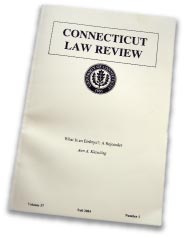Fertilized Eggs Versus Embryos, An Ongoing Failure of Terminology

“What is an Embryo?” Connecticut Law Review, 2004, with forward by Ruth Bader Ginsberg.
Nature does not regard fertilized human eggs as children. Nature’s stringent biological requirements of a fertilized egg leads to miscarriage far more often than successful pregnancy. Fewer than 10% of eggs fertilized in fertility clinics have the biological potential to develop into a child. Nature has evolved rigorous developmental milestones to avoid wasting precious maternal uterus time on a fertilized egg without the capacity for successful development to birth. It’s a numbers’ game. The nine months of human pregnancy means nine eggs will not have the opportunity to be released by the ovary for fertilization, so the fertilized egg occupying the maternal resources needs to prove it is worth the loss of nine other chances to continue the species.
Nature does not regard fertilized human eggs as children.
These facts are well known to reproductive biologists, but those scientists have failed to adequately communicate these basic reproductive principles to everyone, including the legal and ethical scholars striving to protect the interests of the least of us, the human embryo. When fertilization of a human egg could be observed routinely in laboratories decades ago, the scientists and clinicians involved had the responsibility to develop new terminology to accurately describe the early stages of human development never before seen. The privacy of the union of human egg and sperm had been breached, and that breach deserved new and more accurate language for clarity (1).
The confusion caused by the lack of clear terminology has exacerbated the age-old question of “When does life begin?” This is an important religious and ethical concern for societies striving to value all human life and promote the continued advancement of enlightened understanding of what it means to be human. But nature has relentlessly demonstrated it does not share this concern for individual fertilized eggs. Maternal resources are not to be squandered on the weak or defective, those fertilized eggs are unabashedly rejected rapidly by the maternal environment, whereas in laboratory dishes they may be allowed to limp along for a few days and perhaps even preserved in liquid nitrogen storage by well meaning scientists on the futile hope they are more robust than they appear.
Dictionaries before ART defined “embryo” as beginning two to four weeks following fertilization and before the fetal developmental period.
Before assisted reproduction for humans was developed, animal eggs fertilized in laboratories were referred to simply as “fertilized eggs”, the term “embryo” was not applied because it was well known by the scientists conducting the experiments that early development was driven by the egg itself. A better term for “fertilized egg” was desperately needed, but not developed, so the erroneous term of “embryo” was applied by clinicians in early programs of assisted reproductive technology (ART). Dictionaries before ART defined “embryo” as beginning two to four weeks following fertilization, before the fetal developmental period (1). This unfortunate lack of attention to accurate terminology has lead to decades of rancorous debate about the ethical and legal status of eggs fertilized in ART laboratories.

Day one, fertilized human egg.
Nature is not so confused. A fertilized egg has to prove it is biologically relevant before it is worthy of maternal attention. The most well known signal to the mother is the pregnancy test, a protein synthesized by the fertilized egg as it enters the embryo stage. That embryonic signal must increase daily for the first 10 to 12 weeks after fertilization, or the developing embryo, or fetus, is unceremoniously rejected by miscarriage. This natural loss allows a new egg the opportunity to be fertilized and prove its worthiness. The viability of the species depends on this rigorous attention to the fitness of its offspring.
It is not too late for scientists and clinicians to develop terminology that accurately describes nature’s view of “when does life begin?” The inadequate term “embryo” not only fails to be useful, it invokes unnecessary rancor among social bodies striving to support our very humanity. We need to get this right.
(1) “What is an embryo?” Connecticut Law Review, 2004. Law Review Rejoinder.


